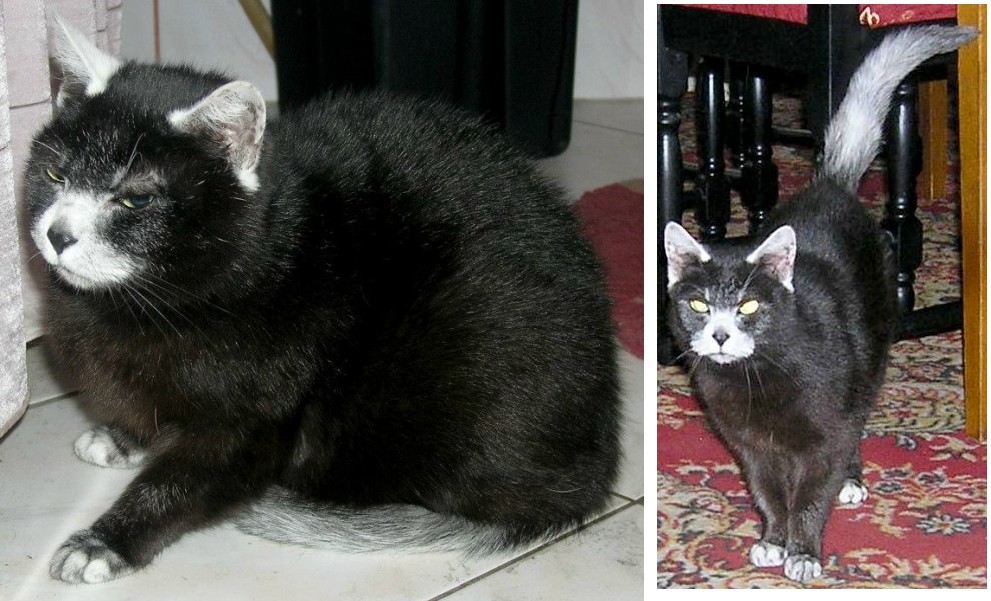
ROAN: KARPATI (CARPATHIAN) PATTERN AND TRANSYLVANIAN BREED
In 2014 some curious black and white cats were reported from the Carpathian region: Hungary, Poland, Ukraine, Slovakia, Romania. These had silvery-white tails, toes/feet, ears and muzzle, but were otherwise black. Because these were mostly neutered pets seeking new homes, the cause of the odd pattern wasn’t known. The white areas appeared to be slightly grizzled with darker fur. Although new to Western cat fanciers, this pattern is so common pattern in the region that no-one considered it worthy of development or investigation. Since first being noticed, the karpati pattern has spread significantly in Slovakia and the Czech Republic and is now a defining feature of the Transylvanian breed in Romania. The pattern has also been introduced into a number of breeds such as the LaPerm.

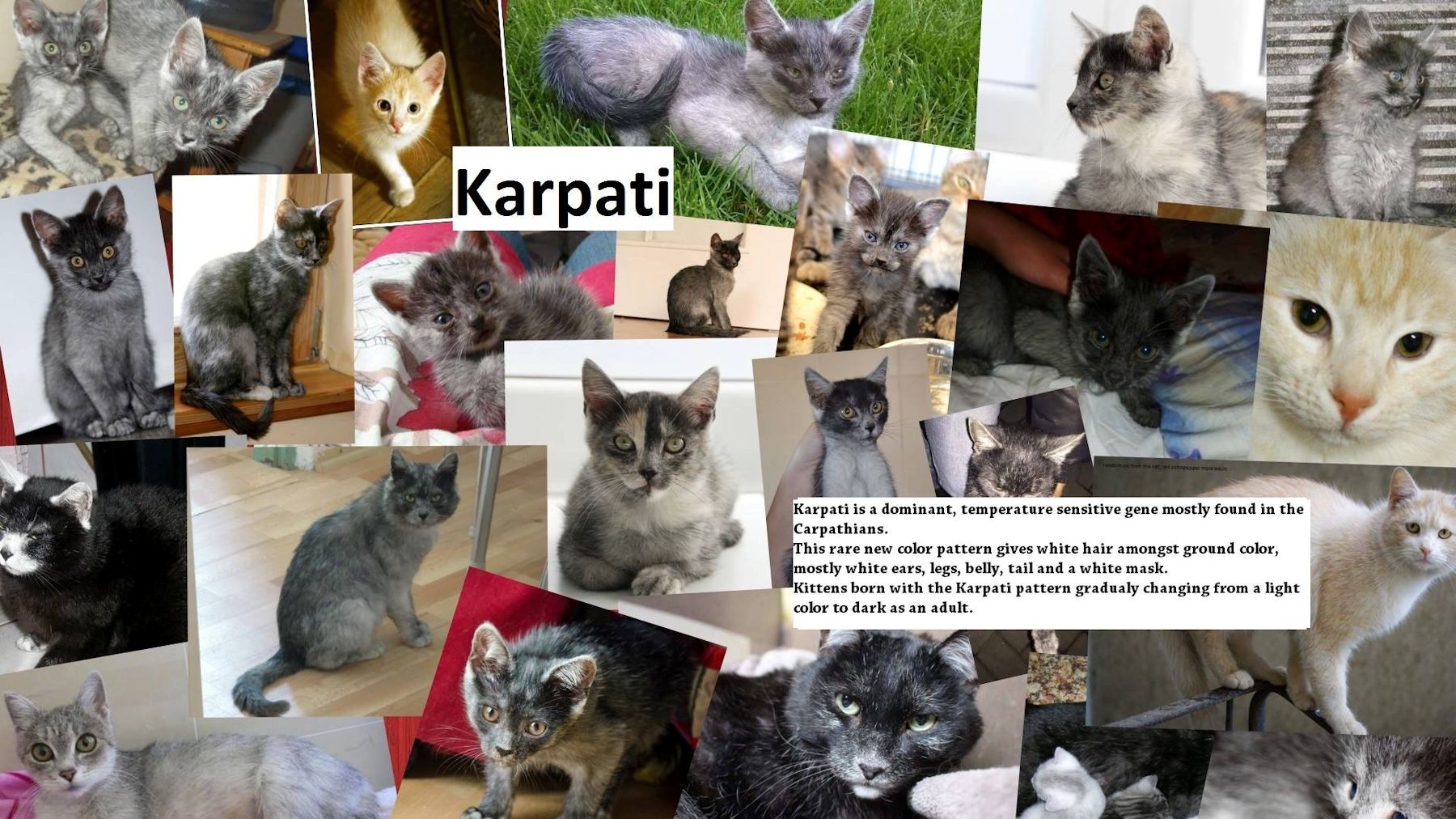
Gertrude Hainzl (Aquilaaltairral LaPerm) began breeding the Karpati trait (originally nicknamed saltnpepper) in domestic shorthairs and has provided photos of her cat Netti at 7 weeks old and 2 years old. Netti came from a private home in Budapest and her parentage is unknown. She darkened with age. Gertrude found that this is an dominant trait; the kittens are born lightcolored with lots of white hairs and few black ones, but darken over time. The degree of darkening is variable. The pattern appears to be temperature sensitive, starting white with perhaps a darker strip down the spine, and then pigmented hairs (in any colour) start coming in making it appear gradually more and more coloured on the body. There are still unpigmented hairs interspersed amongst the pigmented ones, in a sort of roan effect. The extremities have very few of these pigmented hairs so look almost white in some, but paler at least in all, so pale mask, tails, paws, ears. It is not related to colourpoint and, intriguingly, a cat can inherit both colourpoint and karpati to create very unusual patterns. Unlike the Thai Saem-Saert, the Eastern European cats have "powdery" points. Gertrude Hainzl and Anne-Louise Magee (Frisson LaPerm, Queensland, Australia) are developing this new colour in LaPerms.
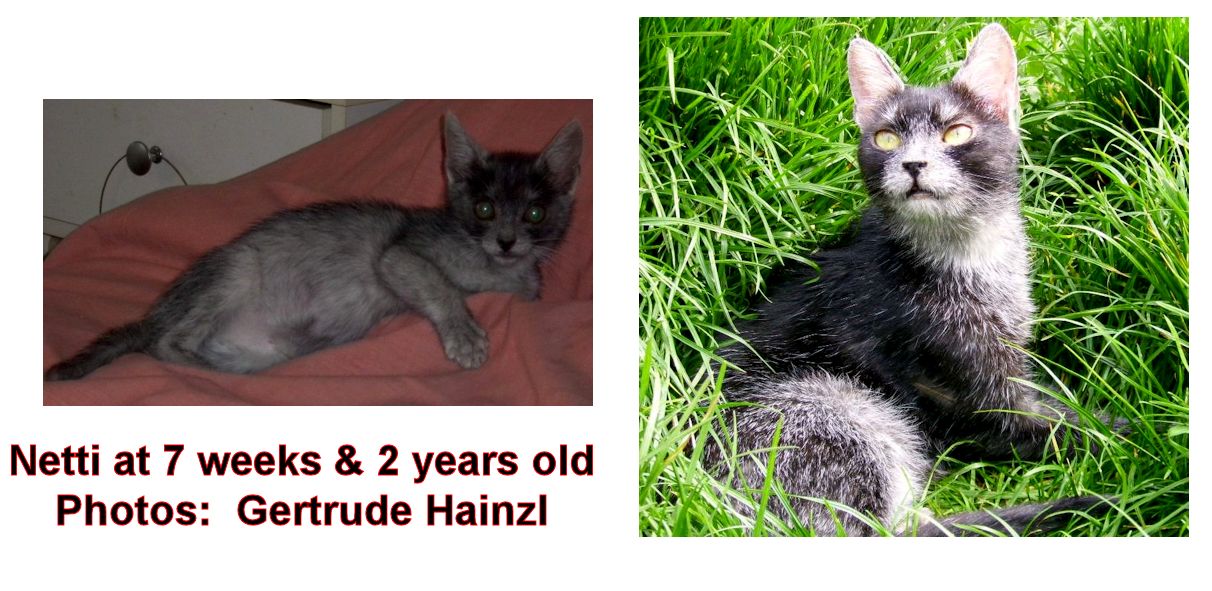
This description of the karpati pattern was written by Anthony Nichols in November 2022. The karpati pattern is caused by a dominant gene, which occurs naturally among non-pedigree cats around the Carpathian Mountains in Eastern Europe. Cats with the gene have white hairs mixed in throughout their coats, but with a greater concentration of white hairs on the points (which could suggest some sort of temperature sensitive effect.) It can be combined with any other colour or pattern, but the best contrast is seen on dark, solid colours. Expression of the pattern is variable with age and season. Kittens are born quite pale (with a larger proportion of white hair within the coat) and darken somewhat with maturity. There is some variability among different individuals and it is not yet understood whether cats with two copies of the gene have a stronger expression of the pattern. Karpati pattern on a longhaired coat may look superficially similar to a smoke or shaded but when the coat is parted there is no white undercoat. Cats with a stronger expression of the pattern can have a 'reverse colourpoint' appearance with white on their tails, feet, nose and ears and a stronger expression with more contrast is preferable. The presence of white hairs within the coat can visually alter the overall appearance of a cat's colour, for example a blue karpati can look like a very pale, powdery blue. The karpati gene is not connected to the Lykoi gene; it only changes pigmentation and there are no structural changes to the coat. Karpati pattern has been introduced to a small number of breeds, including the LaPerm, since it was first brought to the attention of the cat fancy.
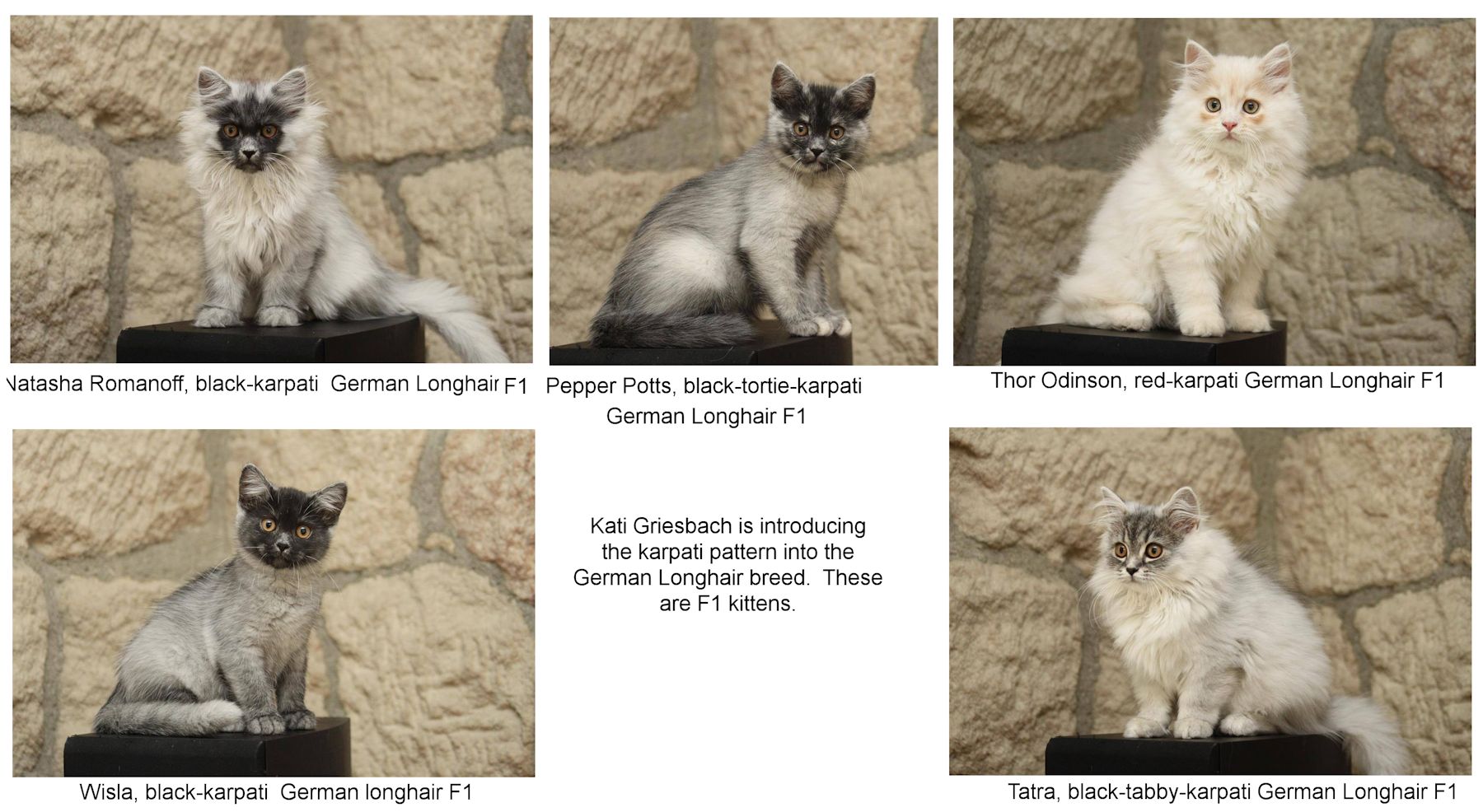
The cat below is a straight-hair LaPerm variant bred by Frisson LaPerm Cats. This this is homozygous red karpati. Mum Chaos is red karpati BC (born curly-haired), and dad Tamas is black karpati and white BS (born straighthaired), so he got a double dose. He's not really white spotted, just heavy roaning and excellent expression.
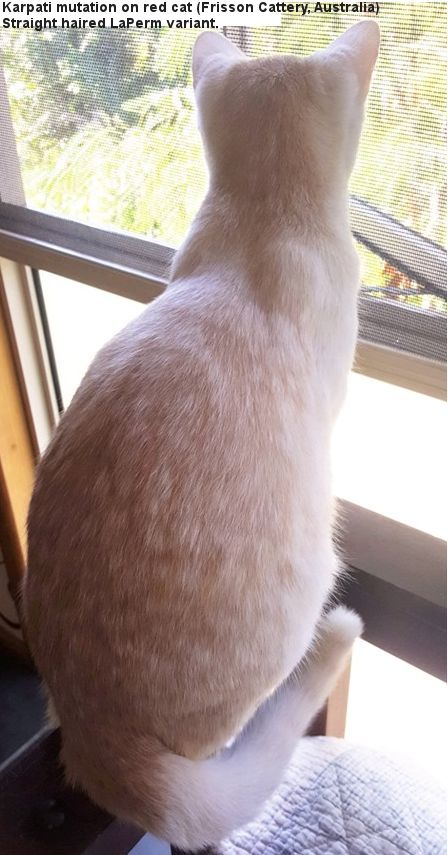
In 2021, Terri Hunt and her sister, Janet Michael, of Brisbane, Australia bred Gen2 karpati-pattern naked Sphynx from their Gen1 coated Sphynx/karpati female. The 3 hairless kittens were black and white, black karpati and white, and black karpati. It is clear which of the kittens show the karpati colouring even though they are almost naked. The karpati Sphynx breeding line is Soul Sphynx. The sisters have bred Sphynx for almost 20 years and the main aim was finding a healthy outcross for their Sphynx to increase health, vigour and genetic diversity. They were offered the opportunity to purchase a shorthaired black-tabby-and-white karpati patterned male they called Frigg. Karpati is a pattern mutation and not a structural mutation so it was a safe and interesting addition to the gene pool. Sceptics told them that the karpati pattern would not be expressed in the Sphynx because they are hairless. Terri and Janet believed otherwise since most Sphynx have a light peach fuzz, and if they were wrong they would still have achieved their main aim of a new healthy outcross line that increased genetic diversity.
After complete health screening and careful consideration they decided that to proceed with the agouti male Frigg, they might not get any clear karpati pattern if it expressed at all. They neutered and rehomed Frigg and moved forward with a chocolate karpati boy called Beans, who was also comprehensively health tested. Beans was mated to black Sphynx female Baba who produced 5 Gen1 coated Sphynx babies, 4 of whom were karpati patterned. One Gen1 female, Santeria, was kept and after her health testing she was mated to Tony, a seal point and white male Sphynx. Having DNA tested the parents, they knew the kittens could only be black, black and white, black karpati, or black karpati and white. In September 2021, Santeria gave birth to three baby girls, whose litter names are Lucumi (black karpati) , PattyO (black and white) and Mouldy (black karpati and white). The roaning on the tail, ears etc is visible on close inspection of the kittens.
A Russian breeder, Julia Karnushina, outcrossing with Sphynx had a litter of two in August 2021: one naked karpati-pattern male and one coated karpati-pattern.
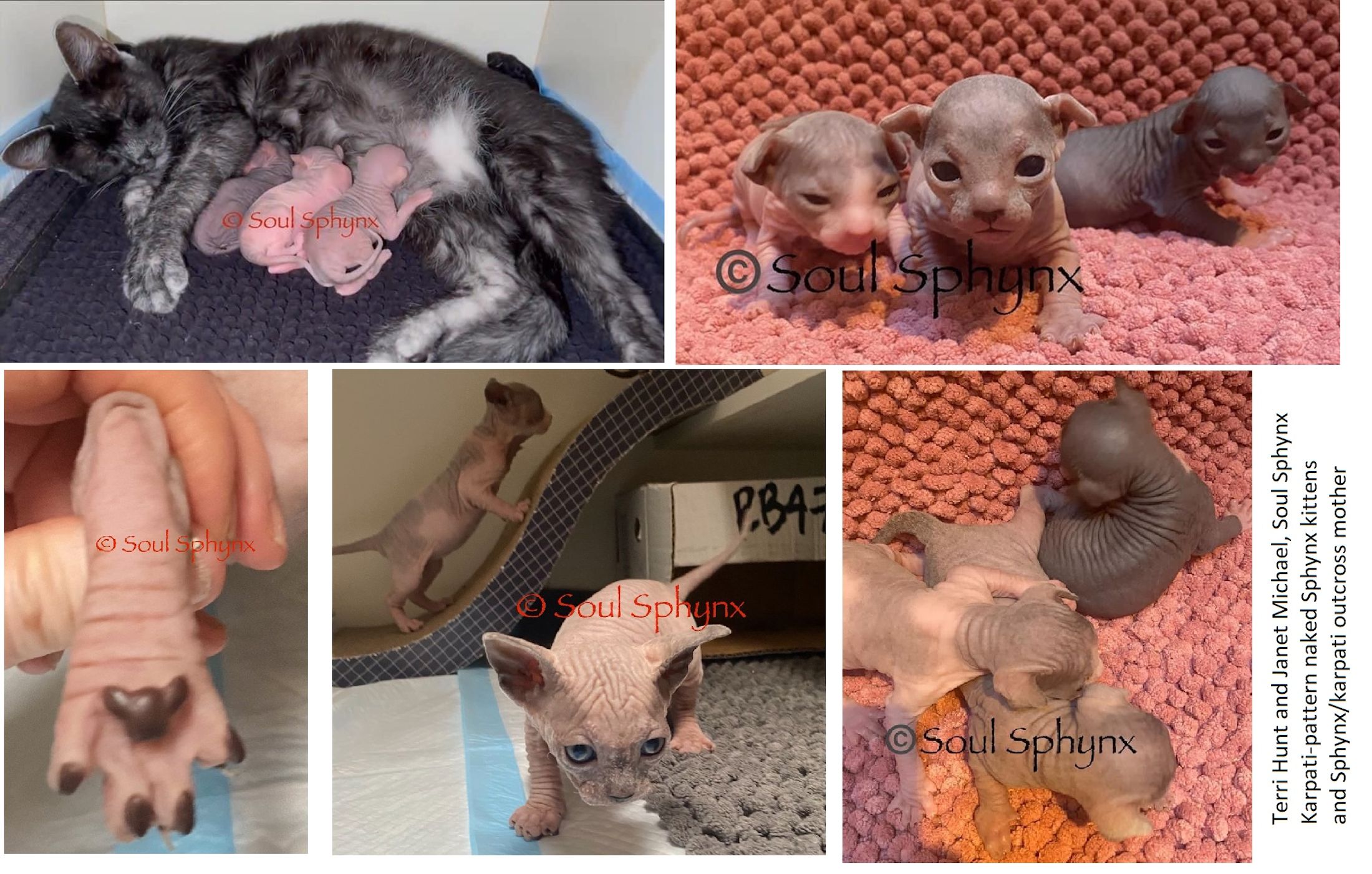
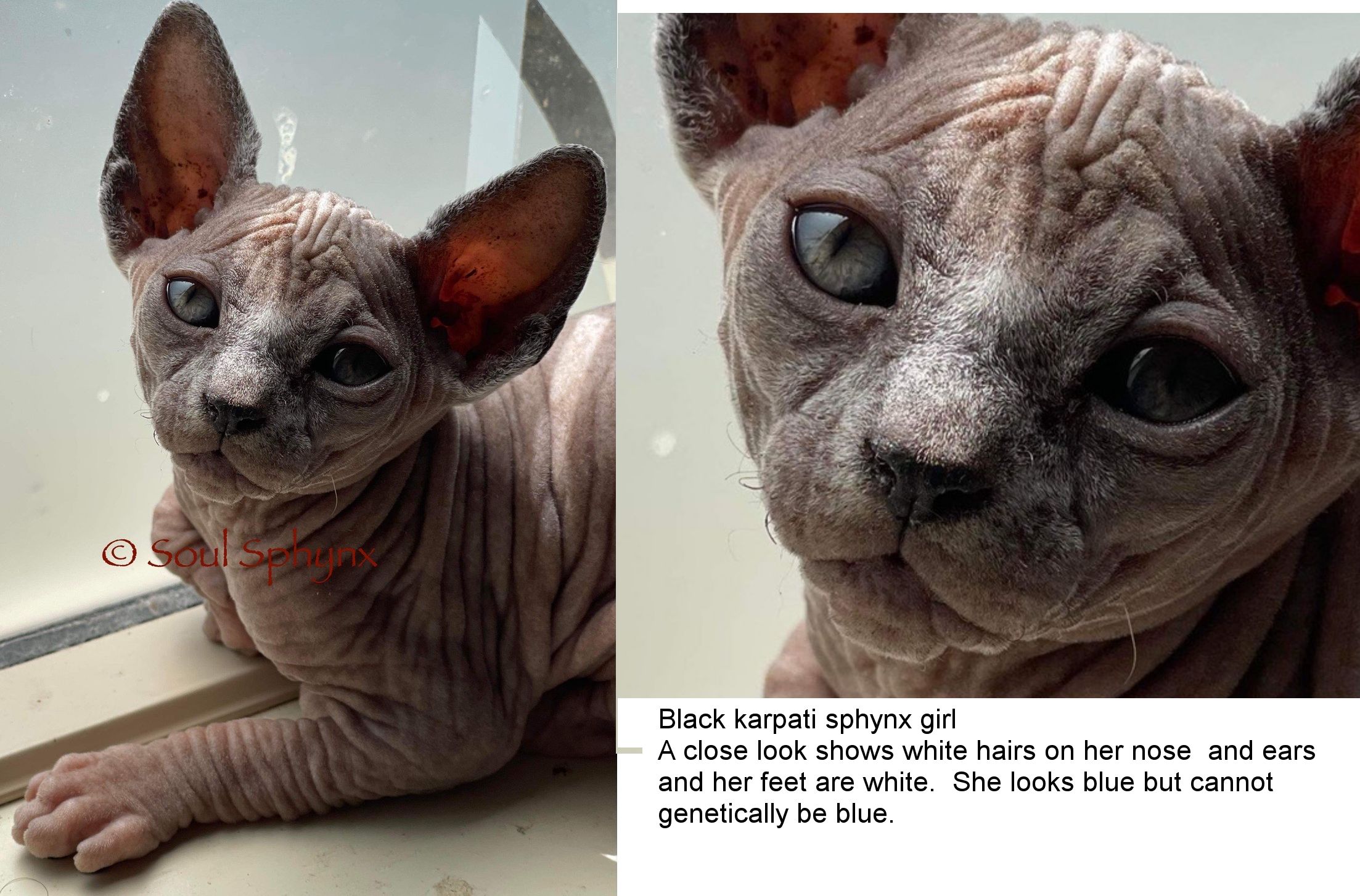
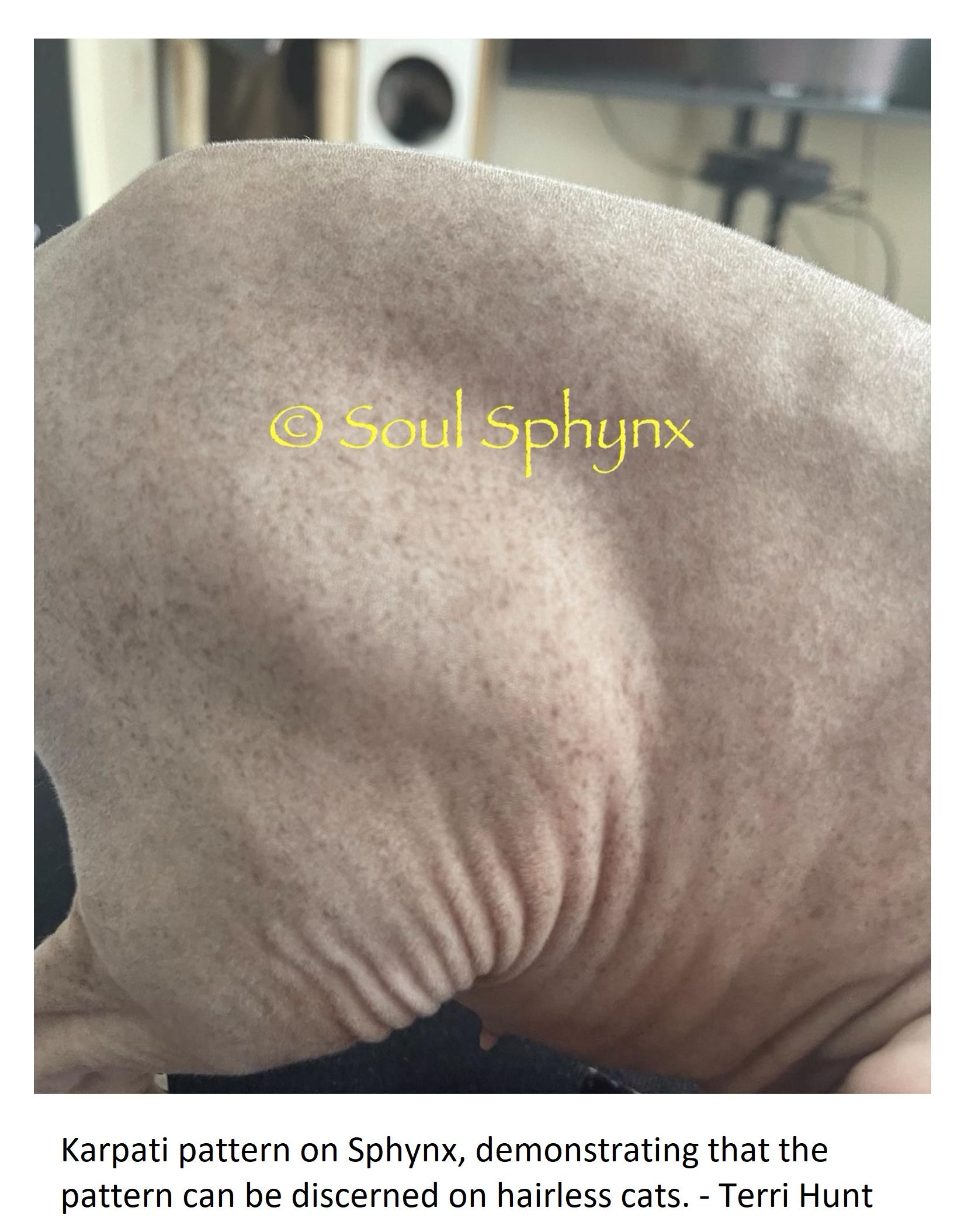
TRANSYLVANIAN BREED
The Transylvanian is a native breed found in the Carpathian Mountains with reverse point pattern known as the karpati pattern i.e. the body is dark, but the extremities are paler. The only permitted colours are black karpati and blue karpati. It is a robust, muscular, medium-sized shorthair cat with a semi-foreign body, yellow to deep orange eyes (though green is accepted) and greyish-white ear furnishings. The reverse point colour on the paws, legs, tail, ears and mask varies from very light grey (almost white) to grey. This starts to develop around the age of 2 months, staring with the ears, toes and tail-tip. The greyish-white reverse point pattern develops slowly and is not complete until at least a year old. The body becomes a salt and pepper (roan) pattern. White ear furnishings and white whiskers are preferred. The pattern is variable in intensity and spread, probably due to being heat-sensitive. The only white markings permitted are a locket and belly spot.